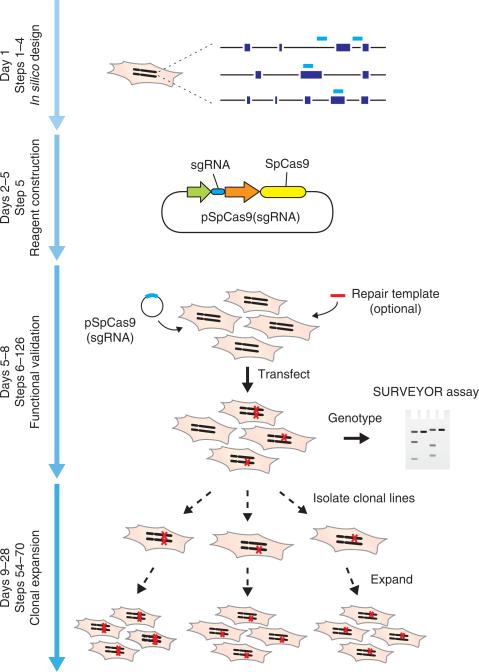Figure 3.
Timeline and overview of experiments. Steps for reagent design, construction, validation and cell line expansion are depicted. Custom sgRNAs (light blue bars) for each target, as well as genotyping primers, are designed in silico via the CRISPR Design Tool (http://tools.genome-engineering.org). sgRNA guide sequences can be cloned into an expression plasmid bearing both sgRNA scaffold backbone (BB) and Cas9, pSpCas9(BB). The resulting plasmid is annotated as pSpCas9(sgRNA). Completed and sequence-verified pSpCas9(sgRNA) plasmids and optional repair templates for facilitating HDR are then transfected into cells and assayed for their ability to mediate targeted cleavage. Finally, transfected cells can be clonally expanded to derive isogenic cell lines with defined mutations.

